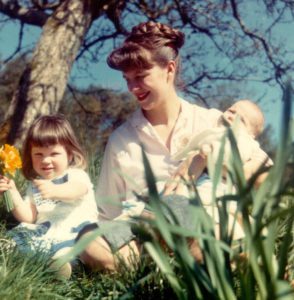Sylvia Plath at the National Portrait Gallery
By • January 10, 2018 0 840
As a writer, you will never run out of ways to improve. You will never simply get on top of it. It is a form of expression that allows in its best moments an opportunity to always surprise.
There is constant discovery that happens on the page. You can fail spectacularly in one moment and watch as dread consumes you, as you realize that the past hours of your life must ultimately be discarded. You can then experience a deep personal enlightenment, elating and fortifying, which will cause you to search indefinitely from that point forward for the chance to feel it again.
As a writer, you learn in the moment, through unmediated forces of internal processing and (at least for me) constant low-level anxiety — a balance of frustration and elation, knowledge and ignorance, showmanship and concealment, brashness and delicacy, joy and desperation. All the while you are struggling to communicate clearly, simply and beautifully, not for yourself, but for the sake of ideas you believe are worthy of sharing with the world.
Sylvia Plath was one of the first writers who showed me writing’s capacity for beauty. Showing me that even achingly personal words can be worthy of sharing with the world, she violently changed my perspective.
Through May 20 at the National Portrait Gallery, audiences can explore the life of this remarkable writer and thinker. “One Life: Sylvia Plath” is the first exploration of her life in a museum of art and history. The exhibition reveals how Plath shaped her identity visually as she came of age as a writer in the 1950s. Visitors will get a look into Plath’s personal life and her dualistic nature — which she explained as her “brown-haired” and “platinum” personalities.
Plath was one of the most dynamic and admired poets of the 20th century. By the time she took her life in 1963, at the age of 30, she already had a following in the literary community. In the ensuing years, her work attracted the attention of a multitude of readers, who saw in her singular verse an attempt to catalogue despair, violent emotion and obsession with death.
Intensely autobiographical, Plath’s poems explore her own mental anguish, her troubled vision of herself.
In the New York Times Book Review, Joyce Carol Oates described Plath as “one of the most celebrated and controversial of postwar poets writing in English.” Of her poems, Oates wrote that, “many of them … read as if they’ve been chiseled, with a fine surgical instrument, out of arctic ice.”
Through personal letters, her own artwork, family photographs and relevant objects, the exhibition highlights Plath’s struggle to understand her own self and to navigate the societal pressures placed on young women during her time. Her Smith College thesis, “The Magic Mirror: A Study of the Double in Two of Dostoevsky’s Novels,” suggests that she took an academic approach to studying her own dualities.
The show features a carefully selected array of images and objects from the Plath archives at Smith College and Indiana University’s Lilly Library, two collections that have never been brought together before in a museum exhibition.
It is quietly devastating to see how happy she really does look in pictures. Like the midcentury American dream, she is beautiful, fair, smiling on a bicycle, sitting with her children in a spring meadow, posing both gracefully and facetiously as Marilyn Monroe on the beach or leaning contentedly into the square frame of her husband, Hughes.

Sylvia Plath with Frieda and Nicholas, Court Green, 1962. Photo by Siv Arb. Courtesy NPG.
Yet her words always invoked a darker landscape. I remember reading her poem “Sow.” It had been given to me as an essay prompt in high school, and upon first reading it I was scared. The words were blistering in their tactility, eliciting horror and curiosity in a way that I could not conceive trying to communicate:
On the move, hedged by a litter of feat-foot ninnies
Shrilling her hulk
To halt for a swig at the pink teats. No. This vast Brobdingnag bulk
Of a sow lounged belly-bedded on that black compost, Fat-rutted eyes
Dream-filmed. What a vision of ancient hoghood …
And then I began writing. I found through my own words the ways that Plath laced her literary and worldly interests with ideas and style wholly her own. It is one of the most valuable techniques I have ever learned, and one that accounts for most of the professional and personal success I have had in my life.
Plath taught me in many ways how to think, how to be critical and aware, how to embrace the beauty of a strange, warm darkness of spirit I had always inarticulately felt. There was great consequence to her own darkness, but it became a beacon of light for millions of others.
You must forgive the autobiographical nature of this article. It seemed somehow fitting, and yet, as always with one’s own writing, entirely inadequate.

